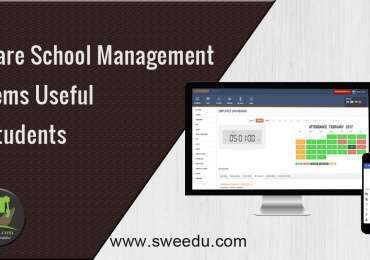 Introduction
Introduction
From efficient operations to challenges in the modern era of running universities, one has to deal with multidimensional aspects of student enrollments, academic scheduling, faculty management and financial tracking. With advanced technology entering the scene, came some of the most powerful tools: University Management Software. These University Management Software products are designed to reduce administrative burden, improve productivity and provide the right atmosphere for academic excellence. In this article, will see the top 10 features that enhance university management software truly effectively and simplified.
1. User-Friendly Interface
An effective university management software has to possess a good user interface. This would allow the staff to browse the system with ease irrespective of their technical knowledge. Clean and straightforward interfaces with logically placed menu options, when used well can aid in user satisfaction and can also greatly lessen the learning curve the users must tackle when implemented in an actual environment.
2. Comprehensive Student Management
Students being central to any kind of institution, Therefore, the application of university management software must provide complete student management facilities. From admission and enrollment to tracking academic progress and graduation requirements, the software provide furnish a holistic view of a student’s whole university life.
2.1 Admission and Enrollment
Admissions and enrollment need modernization if universities want to attract and retain top talent. The university management software make it possible to apply online, manage documents and interact efficiently with current and prospective students.
2.2 Academic Progress Tracking
Monitoring student achievement and their progress is vital for timely interventions and support. The university management software record marks, attendance and production of investigative reports related to student performance.
3. Integrated Financial Management
Financial transparency and accountability are the core needs of university administration and one of the main feature of university management software is accounting module which automates budgeting, track billing, invoice and expense with real time analytics.
4. Dynamic Course Scheduling
Optimizing course scheduling is a very delicate work because you always have to keep in mind faculty availability and classroom resources, along with student preferences. Our AI based time table provide dynamic toolfor creating timetable while keep faculty availability and classrooms allotment in mind.
5. Faculty and Staff Management
University management software also have module for tracking personnel, performance evaluation, professional development planning and scheduling to keep the operation smooth.
6. Seamless Communication Channels
Good communication fosters cohesion and collaboration, which are essential within any university community. Thus, publishing the platform should comprise integrated communication channels, such as email, messaging and announcement messages to ensure that faculty are able to send timely and efficient announcements.
7. Data Security Measures
Being in the digital era makes protecting data a matter of high importance for any university. A Sweedu university management software assure security of the system and its information base by computing resistance through encryption, access controls and data backups and hence fulfilling privacy regulations.
-
-
-
-
Scalability and Customization
-
-
-
Universities are ever-changing institutions. Thus, an effective university management software must be scalable to grow and must be flexible enough to meet the individual needs of each institution. Sweedu software customization options help universities to tailor their software solutions to meet their own specific requirements. Thus we assures maximum efficiency and effectiveness.
-
-
-
-
Analytics and Reporting Tools
-
-
-
Making data-based decisions is an important element that needs to drive continues improvement in university management decisions.These tools make it possible to gain actionable insights and in depth insights in various aspects of institutional performance, including student results and financial patterns.
-
-
-
-
Ongoing Support and Training
-
-
-
Installing and maintaining a university management software requires continuous training and support for staff members at all levels. Sweedu has reliable university management software supportfor efficient and easy to use administration.
Conclusion
Sweedu University management software acts to enhance operational efficiency, dividing student life where student outcomes are formed, therefore ensuring institutional success. According to the top 10 features described in the article, universities can re-engineer the business aspects of their operations using the latest technology to dispel barriers, fast-track working processes and therefore actualize their fullest academic potential.
FAQs (Frequently Asked Questions)
1. How can university management software benefit smaller institutions?
University management software solutions help provide scalable solutions that can be customized in accordance with the needs and financial capacity of smaller institutions and consequently help them in administrative tasks and enhancing productivity.
2. Are university management software solutions customizable?
Yes, Sweedu university management software allow customization to adapt the software to the institution’s unique requirements in order to achieve maximum efficiency and effectiveness simultaneously.
3. How can university management software improve student retention rates?
Universities can use the software to monitor student academic progress and provide tailor-made support services that give early reports for those students that are identified as at risk of dropping out.
4. What security measures should universities look for in a university management software?
University management software solutions should be prioritized by universities, which implement heavy data encryption, access controls and periodic data backups to resist cyber threats and to ensure compliance with privacy laws.
5. How can universities ensure a smooth transition to a new university management software?
Effective training programs, user manuals and responsive support from the software are essential for smooth transitions and the greater uptake of benefits of software by all stakeholders.





![8 Simple Ways for Teachers to Include Social Emotional Learning [SEL] in Classrooms 8 Simple Ways for Teachers to Include Social Emotional Learning [SEL] in Classrooms](https://sweedu.com/wp-content/uploads/2023/08/Social-Emotional-Learning-SEL-in-Classrooms-370x260.png)